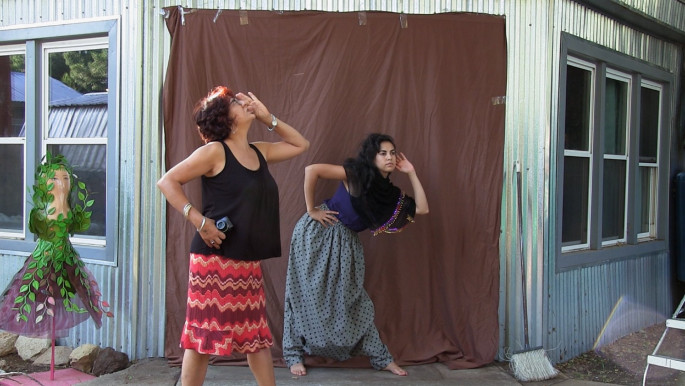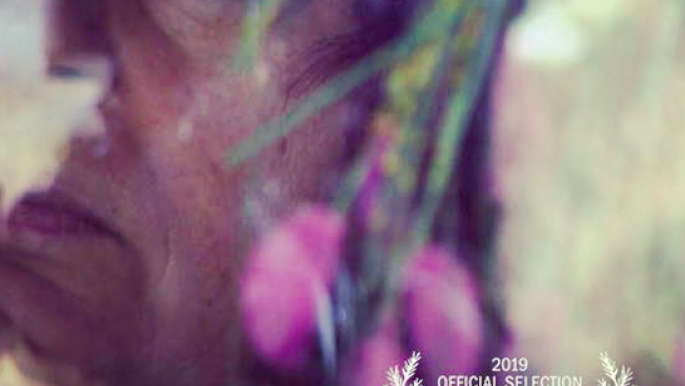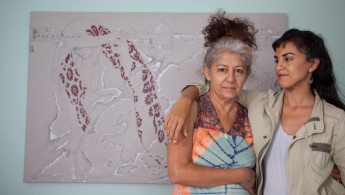Jaddoland: An intergenerational portrait of love (land) and loss
"My own threads of longing," she explains, as a child born to an Iraqi mother and Yemeni father, "move in multiple directions," and "in connection to the people I love."
Like characters in a play, themes of belonging, grief, migration, motherhood, and race, form the cast of Shihab's seminal documentary; Jaddoland.
The 90-minute feature delivers an intergenerational tale of a family - the director's own - that by fate put down new roots in Panhandle, Texas. The film is currently screening as part of the virtually accessible 2020 Liverpool Arab Arts Festival - its first UK screening.
Jaddoland pulls the curtain back on the land of West Texas, where Shihab's mother and artist, Lahib Jaddo, has lived for 35 years, and where Nadia and her brother Kareem were raised. The film contemplates meditatively and nakedly on the ways that memories of life 'back home' have the power to both heal and feed intergenerational trauma.
 |
I was thinking about their migration, their memories, their sense of loss, their struggle to truly feel 'at home' in the West even after 30 years |  |
Against the backdrop of Nadia's childhood home in Lubbock, Texas - birthplace of Buddy Holly - an intimate story of three disparate generations, a daughter, mother and grandfather, emerges.
As mother and daughter, both artists whose creative processes crisscross, Lahib and Nadia's relationship holds centre stage throughout the documentary.
 |
|
| "When I began the film, my mind was on my own family's relationship to the home they left" |
Lahib's presence in front of the camera between her garden and home-studio, and Nadia's from behind the camera, is how Jaddoland acquires its intimate texture - a rare cinematic feat.
The film masterfully weaves in and out of the lives and points-of-view of both women: Lahib at home painting, and Nadia navigating Lubbock, and capturing its distinctive lines and features on film. Languorous sequences and dream-like musical scores, in accompaniment, magically unfold.
 |
Iraq inadvertently becomes the backbone of Jaddoland, addressing the anguish of migration as felt by different members of the family |  |
"While my mother worked, I retraced familiar paths around my neighbourhood," Shihab explained, adding that "along the way" their "parallel creative processes intertwined and tangled in moments of shared confusion and catharsis."
"That was really the seed of the film," Shihab told The New Arab; her and her mother's entwined creativity. She describes the project as "an outgrowth of meaningful time spent with family."
 |
|
"Only until I was much further into the editing process," the cinematographer explained, did the film acquire its final form. Shihab described the incorporation of her own voice "in the form of sparse narration" as "the biggest change" between Jaddoland's inception and completion.
"I was always resistant to narration, but at a certain point in the last months of editing, I realised that some things needed to be said aloud. It was a way to express interiority and share things that weren't visible in the footage alone, and to position the film from my gaze and perspective, as my mother's daughter."
"When I began the film, my mind was on my own family's relationship to the home they left. I was thinking about their migration, their memories, their sense of loss, their struggle to truly feel 'at home' in the west even after 30 years," Shihab said.
What manifests on screen is a soothing vulnerability that in moments pricks us with pain; especially for those for whom migration is not a familiar tale but a lifetime we lived.
The camera exists not as a third eye but as a way to animate the storyteller's way of seeing. It provokes the need to think about the ways that a mother and daughter's gaze may converge and split.
A large part of the tale is told not with words but through the rich visual tapestry that Shihab excavates, featuring acres of flat Texan land against changeable skies, trinkets of a past life, cacti plants, tasseography (coffee grounds divination) Lahib's brightly coloured home and tended garden, where much of Jaddoland takes place.
Art, as we learn from Lahib, is a tool people use to navigate the murky terrain of their emotions. As Lahib expresses on screen: "I don't make art to make pretty things to hang in my house or sell. I make it because it helps me understand my life." Viewers may also come to view it as an invisible thread that binds not only Shihab to her mother, but Lahib to hers, from whom she inherited much of her own repertoire.
 |
The film contemplates meditatively on the ways that memories of life 'back home' have the power to both heal and feed intergenerational trauma |  |
Across a series of paintings in which the landscapes of Iraq and Texas are depicted interchangeably by Lahib, her daughter Nadia is a figure that appears recurrently. It feels almost like photographic double exposure; multi-layered moments from Lahib's past in Iraq, the life she made in Texas and an impalpable bond to both.
Shihab describes the act of posing for her mother's artwork as ritualistic, from which she can sense how her mother is feeling, in how she choreographs the shoot.
 |
|
| "She said the land of West Texas was a mirror image of Iraq" |
Iraq inadvertently becomes the backbone of Jaddoland, addressing the anguish of migration as felt by different members of the family.
"She said the land of West Texas was a mirror image of Iraq," Shihab narrates, "the other memory of home that she [Lahib] searched for''.
 |
Jaddoland doesn't dwell but rather unearths the past, searching for surviving fragments, scattered by rupture, loss, circumstance, and not least, wars |  |
Iraq's presence can be felt in Lahib's paintings, her interactions with her father, skype calls across continents with her sisters, family photographs and home-videos capturing simpler times.
Shihab said the moment the "the film really became a film," was the year her grandfather visited Texas. It was the same year and month of the Islamic State's occupation of northern Iraq.
 |
|
"His hometown of Tal Afar," a mixed but largely Turkmen Iraqi district, Shihab explains, fell to IS. "He was very sad that summer". Shihab's grandfather emerges as an important anchor, "a lifeline," as Shihab describes in the film, "back to a homeland that is not my home but that is still part of me."
However, Shihab's role as auteur of Jaddoland is how the film retains authenticity.
"I intentionally used a very small and simple camera because it was easier and less distracting," Shihab told The New Arab, adding, "I never tried to be 'invisible' while filming. If anything, I wanted my presence of being in the room to be felt."
The film sheds light on Iraq's Turkmen community, which the author admits was unintentional. "I feel fortunate to work in a medium that allows me to bring together the voices and stories of my family with my own,'' Shihabi said, adding that "if I had approached the film as a project to 'represent' a community, like the Turcomen, it would have been very difficult, because I only know this community through my mom and am so far removed from the Turcomen in Iraq."
In adopting these separate, interlacing stories, Jaddoland doesn't dwell but rather unearths the past, searching for surviving fragments, scattered by rupture, loss, circumstance, and not least, wars.
The film will be screening as part of Liverpool Arab Arts Festival until 18 July 2020.
Follow her on Twitter: @NazliTarzi





 Follow the Middle East's top stories in English at The New Arab on Google News
Follow the Middle East's top stories in English at The New Arab on Google News


